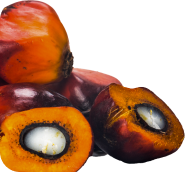
Palm oil production is often criticized for its environmental impact. However, the industry has been making remarkable strides in adopting innovative approaches to utilize by-products and waste, transforming them into valuable resources. Oil palm waste can be used in the production of animal feed, biofuels, and biomass, and oil palm waste management in Malaysia and Indonesia not only reduces waste but also contributes to the development of a circular economy in those countries.
This in an important factor in palm oil economy and ensures that the financial benefits of the crop are able to be spread wider than just plantations, refineries and manufacturers.

Oil palm waste suppliers have recognized the potential of by-products, such as palm kernel shells and empty fruit bunches, as valuable sources of renewable energy. These by-products can be converted into biomass pellets or briquettes, used as biofuel alternatives to coal and fossil fuels. By utilizing these by-products for energy production, the industry reduces waste and decreases reliance on non-renewable energy sources, thus promoting a more sustainable energy landscape.
Palm oil by-products are also used as biomass feedstock. Biomass power plants generate electricity by burning palm oil residues, such as fiber and shell, to produce steam and drive turbines. This renewable energy source not only reduces waste but also provides sustainable power for various industries. By harnessing biomass, the palm oil industry contributes to cleaner energy production, reducing greenhouse gas emissions and environmental impact.
Torrefaction of Oil Palm Wastes
Torrefaction improves the effectiveness of oil palm waste as a biofuel. It is a thermal pre-treatment process that is used to convert biomass into a solid fuel with higher energy density and improved physical and chemical properties. The process involves heating the biomass at temperatures of 200-300°C causing it to lose moisture, volatiles, and some oxygen, resulting in a solid product with a higher carbon content and lower ash content.
This is useful for:
- Solid fuel: Torrefied oil palm wastes can be used as a solid fuel for power generation, industrial heating, and other applications.
- Biochar: Torrefied oil palm wastes can be pyrolyzed to produce biochar, which is a charcoal-like material with a high carbon content. Biochar can be used to improve soil quality, reduce greenhouse gas emissions, and filter water.
- Activated carbon: Torrefied oil palm wastes can be activated to produce activated carbon, which is a highly porous material with a high adsorption capacity. Activated carbon can be used to remove pollutants from water and air.
Torrefaction of oil palm wastes is a promising technology which helps to reduce the environmental impact of the palm oil industry by converting waste into valuable products.
It reduces the volume of waste, improves the energy density of the waste, increases the shelf life of the waste, making it easier to transport and store, improves the physical and chemical properties of the waste, making it more compatible with other materials and creates new opportunities for the use of oil palm wastes.
It is a promising technology with the potential to make a significant contribution to the sustainable development of the palm oil industry.
Animal Feed
The palm oil industry has also found value in utilizing oil palm waste as animal feed. Palm kernel meal, a by-product of oil extraction, is rich in protein and can be incorporated into animal feed formulations. By diverting these by-products to the animal feed industry, the industry reduces waste and creates a sustainable source of nutrition for livestock. This practice not only maximizes resource utilization but also reduces the reliance on traditional feed ingredients.
The palm oil industry’s innovative approaches to utilizing by-products and waste demonstrate its commitment to the principles of the circular economy. Through the production of biofuels, biomass, and animal feed, the industry reduces waste, minimizes environmental impact, and promotes sustainable practices.
By transforming by-products into valuable resources, such as renewable energy and animal feed, the industry contributes to a more sustainable and efficient use of resources. While there is still progress to be made, the palm oil industry’s efforts in embracing the circular economy pave the way for a more sustainable future.